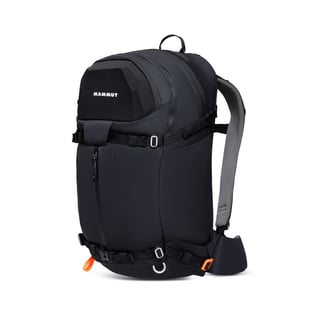Pendraggon87
Member
- Messages
- 43
- Reaction score
- 1
I've been scouring the forums, going crazy writing down all the possible backpacks out there, both photo and hiking specific! Was hoping someone can help me narrow this down. I currently have an old LowPro Video Pack 250 AW and the Boundary backpack. The Boundary is supremely uncomfortable, but I liked how much I can fit in there, and the LowePro has seen better days and is awful in hot weather. When hiking it's really only for 2-6 hours usually so not very intensive.
My requirements are:
I do have a Cotton Carrier Strapshot that I use, but I am still worried with the hiking bags that either I have to put my gear on top, which causes weirdness with weight distribution, or spend too much time rummaging around to get at my gear.
From a photography backpack perspective, I'd been looking at:
My requirements are:
- Carry on for airlines (in US)
- Hydration bladder pocket (with hole for drainage if it bursts) or a water bottle pocket
- Hold a laptop
- Room for a mirrorless camera and a few lenses (A7RIII, Tamron 17-28, Tamron 28-200, and a small Sigma 28)
- Ability to strap a tripod on
- Solid hip support
- Load adjusters
- Back support and comfort - this is key. I HATE how hot it gets using the Boundary backpack or my current LowePro.
- Room to store a fleece/lightweight jacket and hat/gloves and some snacks
- Ideally also able to strap hiking poles in addition to tripod
I do have a Cotton Carrier Strapshot that I use, but I am still worried with the hiking bags that either I have to put my gear on top, which causes weirdness with weight distribution, or spend too much time rummaging around to get at my gear.
From a photography backpack perspective, I'd been looking at:
- Mindshift Rotation Horizon - Looks ok, though I would probably need an insert for some lenses in the top pocket.
- F-Stop Loka UL - Looks interesting, but not sure how much I can actually store in this. The lightweight part is great, but does it come at the cost of protection?
- Thule Aspect - Doesn't seem great for hiking, but may store what I need.
- F-Stop Tilopa - Probably slightly too big for carry on, but have heard some good things. Was told the Ajna was terrible for back airflow
- LowePro Pro Runner BP 350 AWii (what a mouthful)
- Shimoda ActionX 30 - Not sure how comfortable it looks
- Gregory Zulu 40 - I really like the TMP back, and seems I can put in an ICU without much of a fuss.
- Osprey Atmos 50 - Seems like it can fit everything I would need and compress enough I can take it on an airplane
- Mammut Trion Pro 35+7
- Mammut Trion Pro 50+ - if this can get on a plane that would be great
- Osprey Kamber 32
Last edited:



